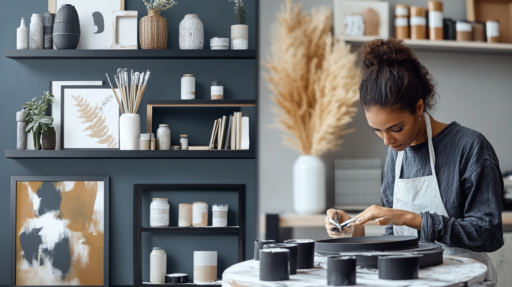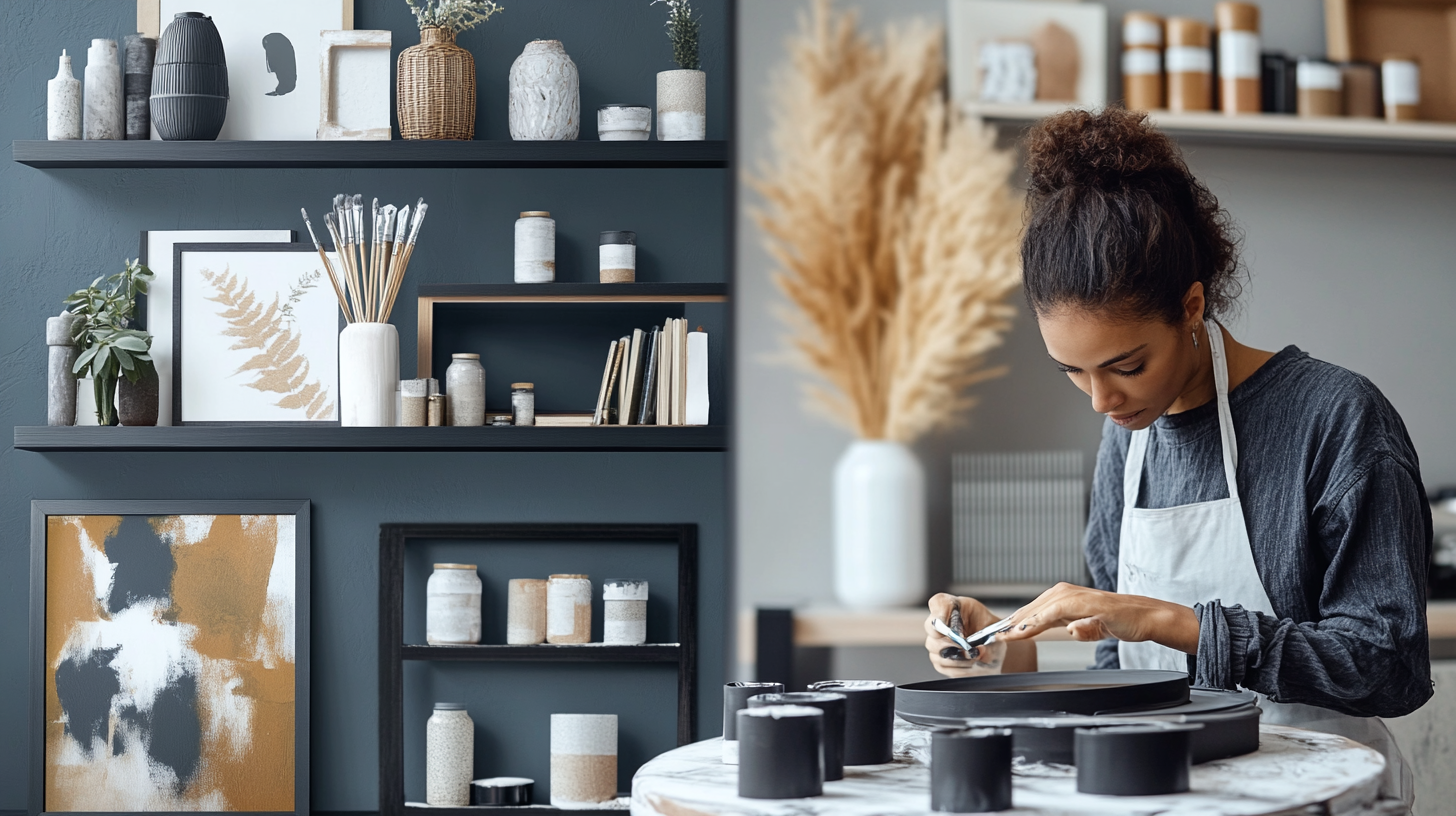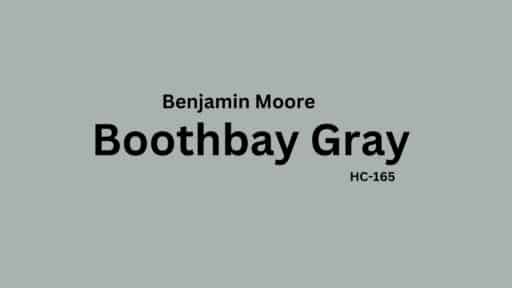Have you ever wondered why luxury items have that interesting, mirror-like black finish that draws you in?
That’s piano black paint—the pinnacle of refined finishes that has been beautiful to the eyes since the 1300s. This finish has become the hallmark of premium craftsmanship, from classic grand pianos to modern supercars.
But here’s what makes it truly special: piano black isn’t just black paint. It’s an art form that changes ordinary surfaces into extraordinary masterpieces, creating a deep depth that feels like you could fall right into it.
The surface becomes a perfect mirror, reflecting light with such accuracy that it adds an almost magical dimension to any object it graces.
Ready to jump into the world of this legendary finish? Let’s explore why piano black paint remains the gold standard of luxury finishes.
Understanding Piano Black Paint
1. Definition of Piano Black Paint
Piano black isn’t just any regular black finish—it’s the gold standard for the deepest, most mirror-like black finish.
Think of it as the difference between looking at a black wall and a black mirror. The finish is so flawless and reflective that it shows every tiny detail, which makes it special.
When done right, it creates an incredibly smooth, glass-like surface that’s become the benchmark for luxury finishes.
2. History and Evolution of Piano Black
The whole story of piano black starts with something called “jet black” in the 1300s. The French polished lignite (a type of coal) until it shone like crazy—they called it “jaiet.”
Fast-forward to the 1700s, when jet black was the go-to reference for the deepest black. However, as piano manufacturing became more refined, especially in recent decades, piano black became the new standard.
It’s pretty interesting how a finish that started in piano factories has become this universal symbol of luxury.
3. Current Uses And Popularity
Piano black has broken free from being a piano thing these days. You’ll spot it everywhere, from high-end cars to fancy electronics, and yes, still on plenty of pianos.
Most new pianos sold today have this finish, which has become extremely popular in the automotive world and even home decor.
The appeal isn’t just about being black; it’s about achieving that perfect, mirror-like reflection synonymous with premium quality.
Car manufacturers and tech companies have jumped on the trend, using piano black to give their products extra grace.
Advantages & Disadvantages of Piano Black Paint

It’s like having a double-edged sword when it comes to black paint on the piano. This stunning finish can make an ordinary piece extraordinary but also presents challenges.
Before committing to this luxurious finish, it’s worth considering both sides of the argument to make an informed decision.
Advantages
- Creates an unmatched mirror-like finish that instantly upgrades the look of any surface
- Adds significant value to furniture and instruments
- It has excellent depth and richness that other finishes can’t match
- Complements both modern and classical design styles
- Hides minor surface imperfections when properly applied
- It provides a timeless appeal that doesn’t go out of style
- Works well with any interior color scheme or decor style
Disadvantages
- It shows every fingerprint and dust particle immediately
- Requires frequent cleaning and maintenance to maintain its spotless look
- Scratches and scuffs are more visible than on other finishes
- It can be challenging and time-consuming to apply it correctly
- More expensive than standard paint finishes due to multiple layers needed
- Demands professional-level skills for perfect application
- Any imperfections in the surface preparation become highly visible
Step-by-Step Guide To Achieve Piano Black Paint

1. Preparing the Surface
The surface must be perfectly smooth before applying paint. Once the gloss finish is applied, any imperfections will be highly visible.
Proper preparation ensures the paint sticks well, lasts longer, and delivers the signature deep black mirror finish.
Clean the Surface
Any dirt, grease, or residue left on the surface can interfere with paint sticking and result in an uneven finish.
Wipe down the surface with a wet cloth to remove dust. Use a degreaser or mild detergent if there are stubborn stains or residues.
Ensuring the surface is completely clean will help prevent imperfections from showing up under the paint layers.
Inspect for Imperfections
Carefully examine the surface for scratches, dents, or uneven areas. Use a bright light at different angles to identify flaws that might not be visible otherwise.
Any scratches or dings left untreated will be amplified once the glossy black finish is applied. Use wood filler for wooden surfaces; a primer filler works best for metal and plastic.
Sanding
Sanding is crucial to creating a smooth base for the paint. Use fine-grit sandpaper (220-320 grit) to remove minor flaws and provide the right texture for the paint.
If the surface has an existing glossy finish, sanding helps remove the sheen, allowing the new paint to bond better. After sanding, wipe the surface with a cloth or microfiber cloth to remove dust.
2. Applying Primer
A high-quality primer is essential for a flawless finish. It helps the paint stick better and creates an even base.
The black paint may not achieve its full depth without a primer, and the finish may appear inconsistent or fade faster.
Choose the Right Primer
Select a high-build primer suitable for the surface. If painting on wood, opt for a wood primer. For metals or plastics, use an adhesion-promoting primer.
The right primer ensures that the glossy black paint applies evenly and doesn’t absorb into porous materials.
Apply Multiple Coats
The primer should be applied in multiple thin coats rather than one thick layer. Each coat should be allowed to dry before applying the next.
Additional layers may be necessary to create a smooth base if the surface is highly absorbent.
Wet Sand the Primer
Once the primer has dried, wet sand it using 400-grit sandpaper. This step removes rough textures or small imperfections, creating a sleek foundation for the black paint.
Wipe the surface with a clean, damp cloth to remove any residue after sanding.
3. Applying the Gloss Black Paint
High-quality polyurethane or lacquer-based black paint is recommended for a true piano black finish. This ensures the depth and shine characteristic of a high-gloss finish.
Achieving the correct layering is crucial for the final mirror-like effect.
Use a Spray Gun for Even Coating
A spray gun provides a much smoother finish than a brush or roller. It eliminates brush strokes and ensures an even application.
A high-quality sprayer allows for better paint flow control, helping avoid drips and uneven patches.
Apply in Thin Layers
Rather than applying thick coats, use multiple thin layers. This helps build up the black’s depth while preventing uneven drying and visible brush marks.
Thick layers can cause paint sagging and affect the reflective quality of the final finish.
Allow Proper Drying Time
Each coat of paint must dry completely before applying the next. Rushing this process can result in a tacky surface or streaks that ruin the finish.
Drying times vary depending on paint type, humidity, and temperature, so follow manufacturer instructions.
Wet Sand Between Coats
For the smoothest possible finish, lightly wet each layer with 800-1000 grit sandpaper.
This helps remove any dust particles or inconsistencies in the previous layers and ensures the surface remains level and ready for additional coats.
4. Leveling the Layers
A true piano black finish requires smooth paint application and layers leveling to create an uninterrupted reflective surface. This step ensures that the black surface acts like a mirror without distortion.
Check for Orange Peel Texture
Orange peel refers to a slightly rippled surface texture that can occur after spraying. This needs to be corrected to ensure a flawless reflection.
The best way to check for orange peel is by examining the surface under bright light at an angle.
Use Ultra-Fine Sandpaper
Start sanding with 1200-grit sandpaper and work up to 2000 grit to gradually refine the surface. This removes any small inconsistencies and helps create a glass-like smoothness.
Final Wet Sanding
Use 3000-grit wet sandpaper and a sanding block for the final smoothing stage. This step eliminates the slightest texture issues and ensures the surface is ready for polishing.
5. Polishing and Buffing
Once the paint has been leveled, polishing restores the high-gloss, reflective finish that makes piano black so striking. The polishing process removes micro-scratches and enhances the shine.
Use a Polishing Compound
A fine polishing compound should be applied with a polisher or a soft cloth. This step removes sanding marks and enhances the depth of the black finish. Polishing also helps achieve a uniform, glossy surface.
Buff to a Mirror Finish
Buffing in circular motions with a buffing pad helps bring out the deepest shine. This step is critical in achieving the high-gloss effect associated with piano black finishes.
Buffing should be done carefully to avoid burning through the paint layers.
Final Touch with a Glaze
A finishing glaze further enhances the depth and adds an extra protective layer. This glaze helps protect against minor scratches and keeps the surface pristine for longer.
6. Sealing the Finish
Protective glue is necessary to protect the high-gloss black from scratches and fading. This final step helps preserve the finish and maintain its mirror-like reflection.
Use a Clear Polyurethane or Lacquer
A high-gloss clear coat provides durability and preserves the piano black effect. Polyurethane coatings offer long-term protection, while lacquer adds an extra shine.
Apply Multiple Thin Coats
Like the paint, the clear coat should be applied in multiple thin layers. Spraying helps ensure even distribution without visible brush strokes or pooling.
Final Buffing
Once the clear coat has dried completely, buff the surface using a fine polish. This final stage enhances the mirror-like effect and maximizes the reflective quality of the finish.
Common Mistakes When Using Piano Black Paint

Skipping Proper Prep Work
Let’s face it—nobody loves the prep work, but skipping it is a recipe for disaster when painting a piano black.
Without proper sanding and cleaning, you’ll have an uneven finish that shows every bump and scratch underneath.
If you start with a shiny lacquer surface or rough patches, your new paint job won’t have anything good to grip onto.
Rushing the Drying Process
Getting impatient with drying times is a huge no-no. Each coat needs proper time to cure, and rushing can result in a mess that can ruin your whole project.
Key points to remember:
- Wait at least 24 hours between coats
- Avoid humid conditions while drying
- Don’t touch or test the surface too early
- Consider temperature – cooler temps need longer drying times
Inadequate Sealing
Skipping the sealing step might save you time, but you’ll regret it later. Your beautiful black finish will not withstand daily use without a proper clear wax or sealer.
The paint can chip, scratch easily, or even start peeling off in high-touch areas. Based on my research, a quality sealer like Real Paint Co.
Clear Wax makes a huge difference. It protects your paint job and gives it a professional, finished look that lasts.
Remember, the sealing process isn’t just about slapping on a protective layer; it’s about preserving all the hard work you’ve put into achieving that perfect piano black finish.
The Bottom Line
Piano black paint is a testament to the enduring charm of perfection in craftsmanship. While its application demands patience, precision, and expertise, the results are spectacular.
This timeless finish defines luxury across industries, from its origins in musical instruments to its modern automotive and interior design applications.
If you’re a craftsman considering this finish for your next project or simply an admirer of its breathtaking appeal, understanding piano black paint helps you appreciate the artistry behind its mirror-like surface.
As trends come and go, piano black paint remains the gold standard of finishes, proving that true excellence never goes out of style.








